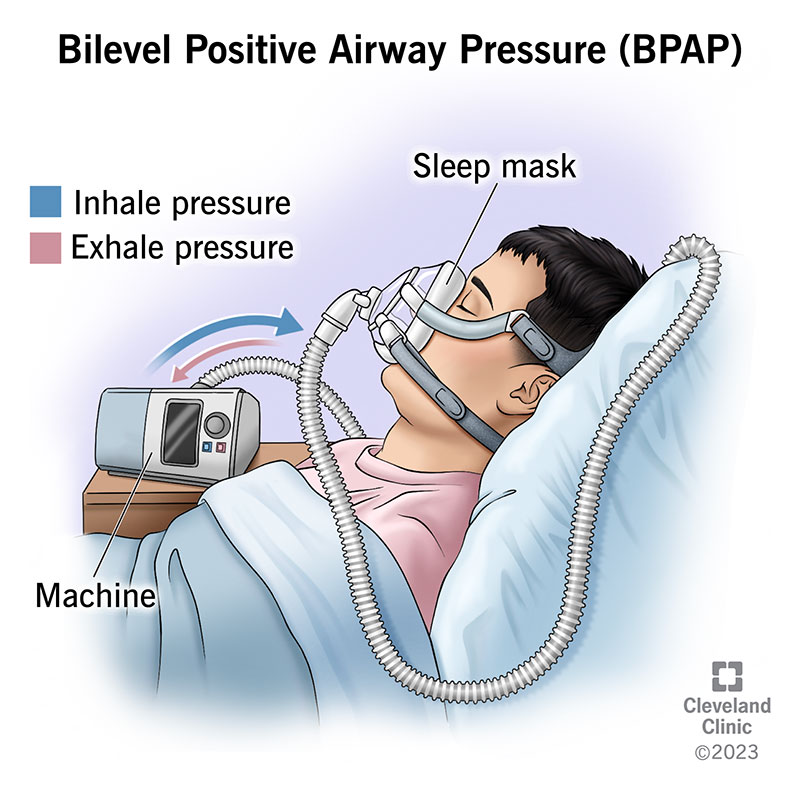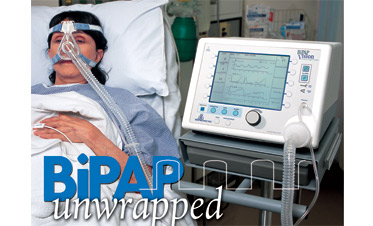BiPAP Rental Solutions for Short-Term Medical Requirements
BiPAP Rental Solutions for Short-Term Medical Requirements
Blog Article
Bipap vs. CPAP: Which Is the most effective for Your Sleep Condition?
When navigating the intricacies of sleep problems, the selection between BiPAP and CPAP therapy is a crucial consideration. Each modality supplies unique benefits tailored to certain conditions, yet the choice rests on private patient requirements and comfort degrees. While CPAP gives a stable airflow appropriate for obstructive rest apnea, BiPAP's dual stress setups might enhance comfort for those with more complex respiratory problems. Recognizing these differences can significantly impact treatment effectiveness, leaving one to ponder which alternative absolutely lines up with their health and wellness demands and lifestyle.
Comprehending Sleep Disorders
Rest disorders incorporate a variety of conditions that interrupt regular sleep patterns, affecting both the high quality and period of remainder. These problems can materialize in different forms, consisting of insomnia, rest apnea, narcolepsy, uneasy leg syndrome, and parasomnias. Each condition offers one-of-a-kind difficulties, usually bring about significant daytime fatigue, cognitive problems, and psychological disturbances.
Sleep problems is characterized by problem falling or remaining asleep, while rest apnea includes duplicated disruptions in breathing throughout rest, typically bring about fragmented rest. Narcolepsy, on the various other hand, is marked by extreme daytime drowsiness and sudden sleep assaults. Troubled leg syndrome triggers unpleasant feelings in the legs, prompting an uncontrollable urge to relocate them, which can additionally hinder the capability to sleep.
The effect of rest disorders extends past private wellness, affecting total performance, connections, and high quality of life. Recognizing the details nature of each problem is critical for reliable medical diagnosis and therapy. As rest health and wellness becomes increasingly recognized as a vital part of total well-being, addressing these problems is essential for improving both sleep quality and everyday performance.
How CPAP Functions
Continual Favorable Air Passage Stress (CPAP) therapy is regularly used as a main therapy for obstructive sleep apnea (OSA) The mechanism of CPAP includes making use of a machine that supplies a steady stream of air through a mask used throughout rest. This air movement maintains positive pressure in the respiratory tract, protecting against the collapse or obstruction of the throat that can happen throughout rest.
When a patient takes a breath in, the CPAP maker offers a constant flow of air, guaranteeing that the respiratory tract stays open - BiPAP Rental. This not only eases the signs of OSA, such as snoring and disrupted rest patterns, however additionally minimizes the associated health risks, consisting of cardiovascular difficulties and daytime tiredness
The pressure setups on a CPAP equipment can be personalized to meet individual client needs, frequently determined through a sleep study. Generally, CPAP treatment has been revealed to substantially improve the top quality of sleep and overall health and wellness for people suffering from obstructive rest apnea.
How BiPAP Works
BiPAP, or Bilevel Positive Airway Stress, is a customized kind of non-invasive ventilation that is especially advantageous for individuals with conditions such as intricate sleep apnea or respiratory problems. Unlike CPAP, which provides a constant stream of air at a solitary stress, BiPAP gives two unique pressure setups: a greater inspiratory stress for inhalation and a reduced expiratory pressure for exhalation. This dual-pressure technique permits less complicated breathing, reducing the effort needed throughout exhalation.
The gadget runs through a mask fitted over the nose or mouth, connected to a device that produces atmospheric pressure. When the person breathes in, the machine provides the greater pressure to aid with air flow, view it now making sure that the airway continues to be open. Upon exhalation, the machine immediately minimizes the pressure, making it much more comfortable for the person to take a breath out.

Secret Distinctions Between BiPAP and CPAP

On the other hand, BiPAP (Bilevel Positive Air passage Pressure) provides two various pressure setups: one for breathing and a lower one for exhalation. This double stress system enables more comfortable breathing, particularly for people who deal with exhaling versus a constant stress. BiPAP is frequently recommended for people with intricate sleep apnea, chronic obstructive lung illness (COPD), or those that require added assistance during rest.
In visit this web-site addition, the complexity of BiPAP devices typically leads to a greater expense and requires more cautious titration than CPAP. BiPAP Rental. Understanding these crucial differences can aid in identifying which device may be better for certain rest problems, establishing the foundation for educated treatment choices
Picking the Right Treatment
Exactly how can one establish one of the most appropriate therapy for taking care of sleep conditions? The choice in between BiPAP and CPAP therapy primarily pivots on the certain attributes of the rest disorder, the patient's overall wellness, and their convenience with the gadget. CPAP, which delivers a continuous stream of air, is generally recommended for obstructive sleep apnea (OSA) It keeps an open airway during sleep, effectively avoiding hypopneas and apneas.
Alternatively, BiPAP provides two degrees of pressure: one for inhalation and a lower one for exhalation. This double stress system is beneficial for individuals with complex rest apnea or those who experience trouble exhaling versus a constant stress. Additionally, BiPAP is frequently suggested for individuals with breathing problems, such as persistent obstructive pulmonary illness (COPD), where varying pressure setups can improve comfort and compliance.
Inevitably, an extensive analysis by a rest specialist, consisting of a rest research, can aid determine which therapy straightens best with the individual's demands. Variables such as convenience, convenience of use, and particular medical conditions ought to also be taken into consideration to enhance therapy end results.
Final Thought
In summary, both BiPAP and CPAP offer distinctive objectives in the monitoring of rest problems. CPAP works for obstructive sleep apnea via consistent air movement, while BiPAP uses dual pressure settings that enhance comfort for those with complex sleep apnea or breathing issues. The option between these treatments should be led by private demands and conditions, requiring a detailed analysis by a sleep professional to ensure ideal therapy results and boosted top quality of sleep.

In general, CPAP therapy has actually been shown to substantially enhance the quality of rest and general health and wellness for people experiencing from obstructive sleep apnea.
BiPAP is frequently recommended for clients with intricate sleep apnea, chronic obstructive lung disease (COPD), or those that need additional support during sleep.
CPAP is reliable for obstructive rest apnea with constant airflow, while BiPAP provides twin stress settings that improve convenience for those with complicated sleep apnea or respiratory problems.
Report this page